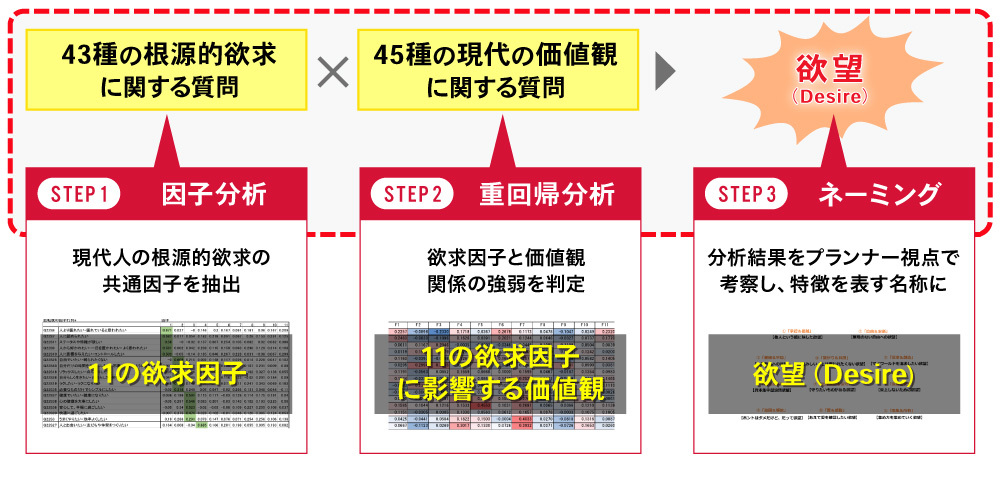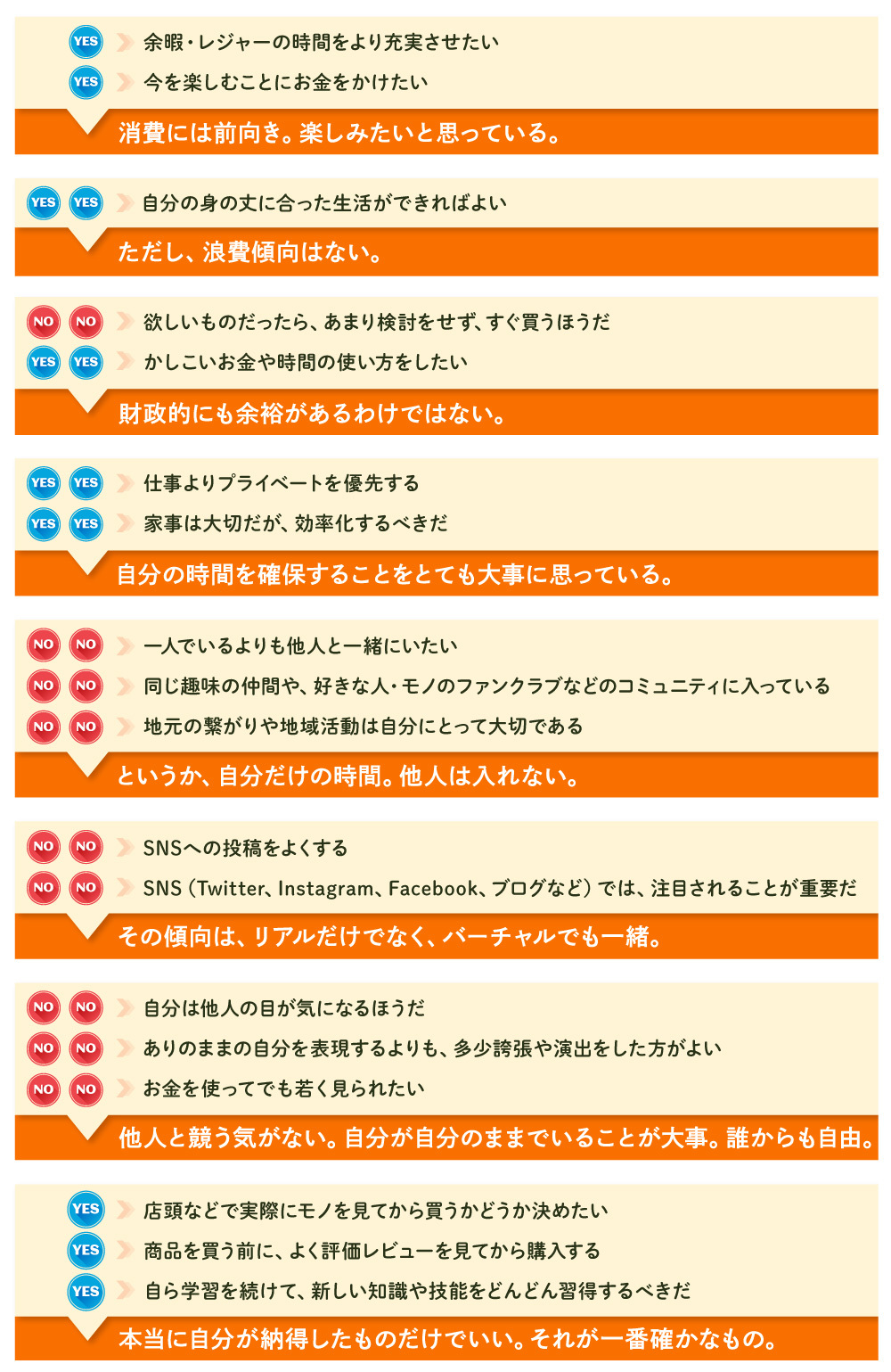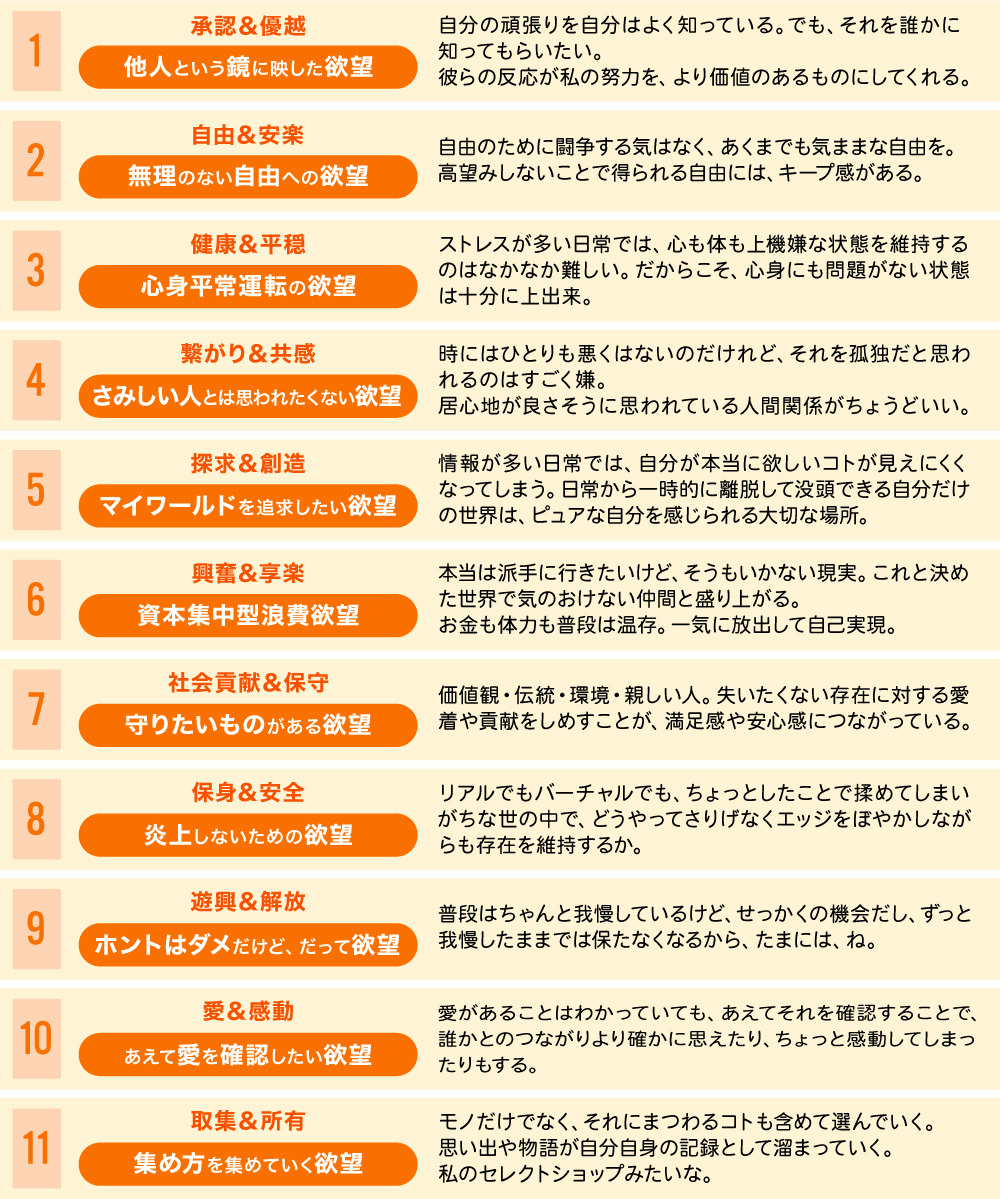In this series, members of Dentsu Inc.'s new consumer research project " DENTSU DESIRE DESIGN (DDD) " introduce their approach to consumer insights rooted in "desire" and future developments.
An Attempt to Integrate 43 Types of "Fundamental Desires" and 45 Types of "Contemporary Values"
Desires change. The desires of a given time and era are born from the interplay between the "fundamental desires" inherent in all people and the "value foundation" formed and reinforced by their environment.
Based on this concept, DDD's activities examine and reveal current desires. In the first three installments, we explained the background of compiling the "Desire Octagram," which integrates established theories on fundamental desires from Maslow, Schwartz, and others, and its application to research.
This time, we will explain how we integrated the actual survey data—43 "fundamental desire" items and 45 "contemporary value" responses—into a cohesive framework of desire.
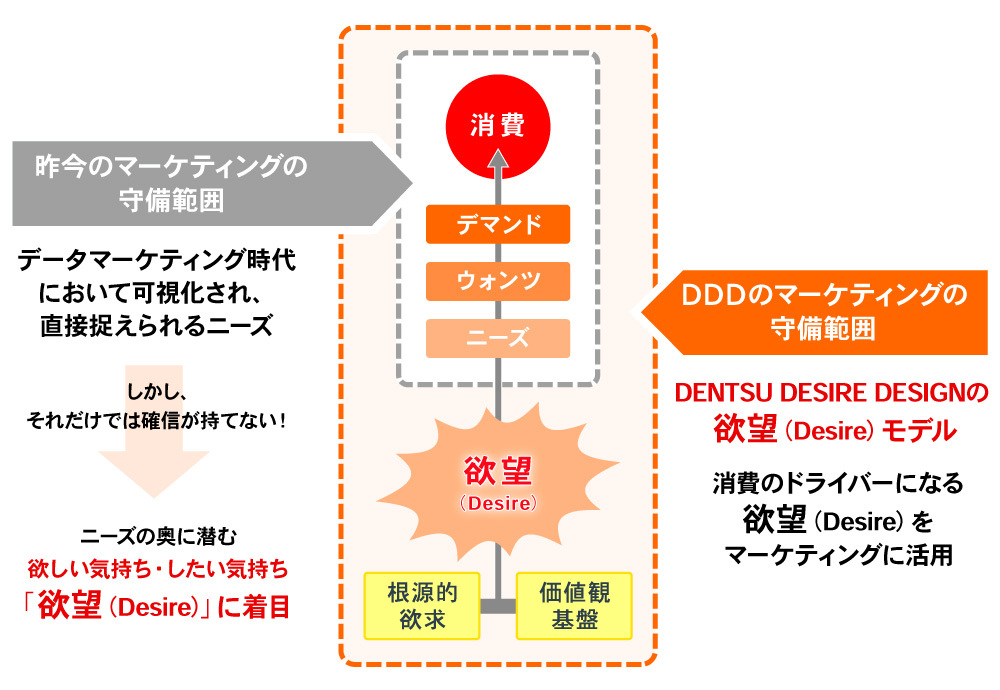
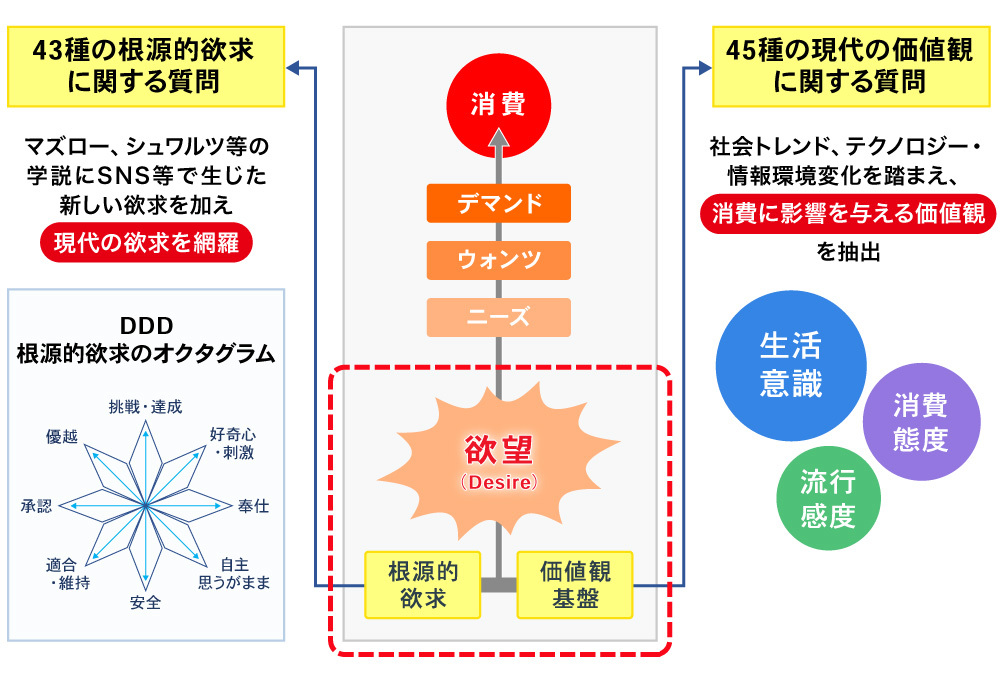
Exploring new desires against the backdrop of pandemic, economic downturn, and social media
The broad flow of the analysis process is as follows. First, create groups from the questionnaire questions about "fundamental desires" introduced in the third article. For example, grouping them under "Freedom & Comfort" (see table below).
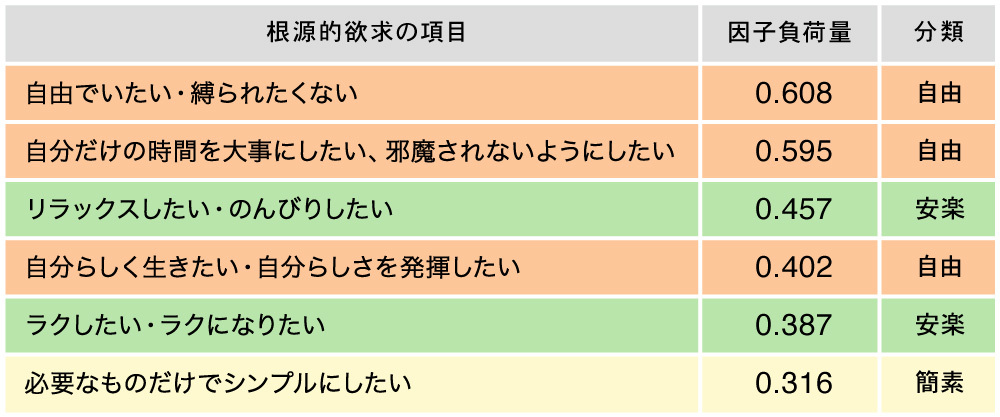
Next, within the group showing high interest in fundamental desires like "wanting to be free" or "wanting to live authentically," we identified value biases. For instance, we examined items scoring particularly low or, conversely, high. This revealed the "new desires" born from their fundamental "Freedom & Comfort" desire, filtered through their current value foundation.
Let's illustrate this concretely. The value skew within the "Freedom & Comfort" group appeared as follows.
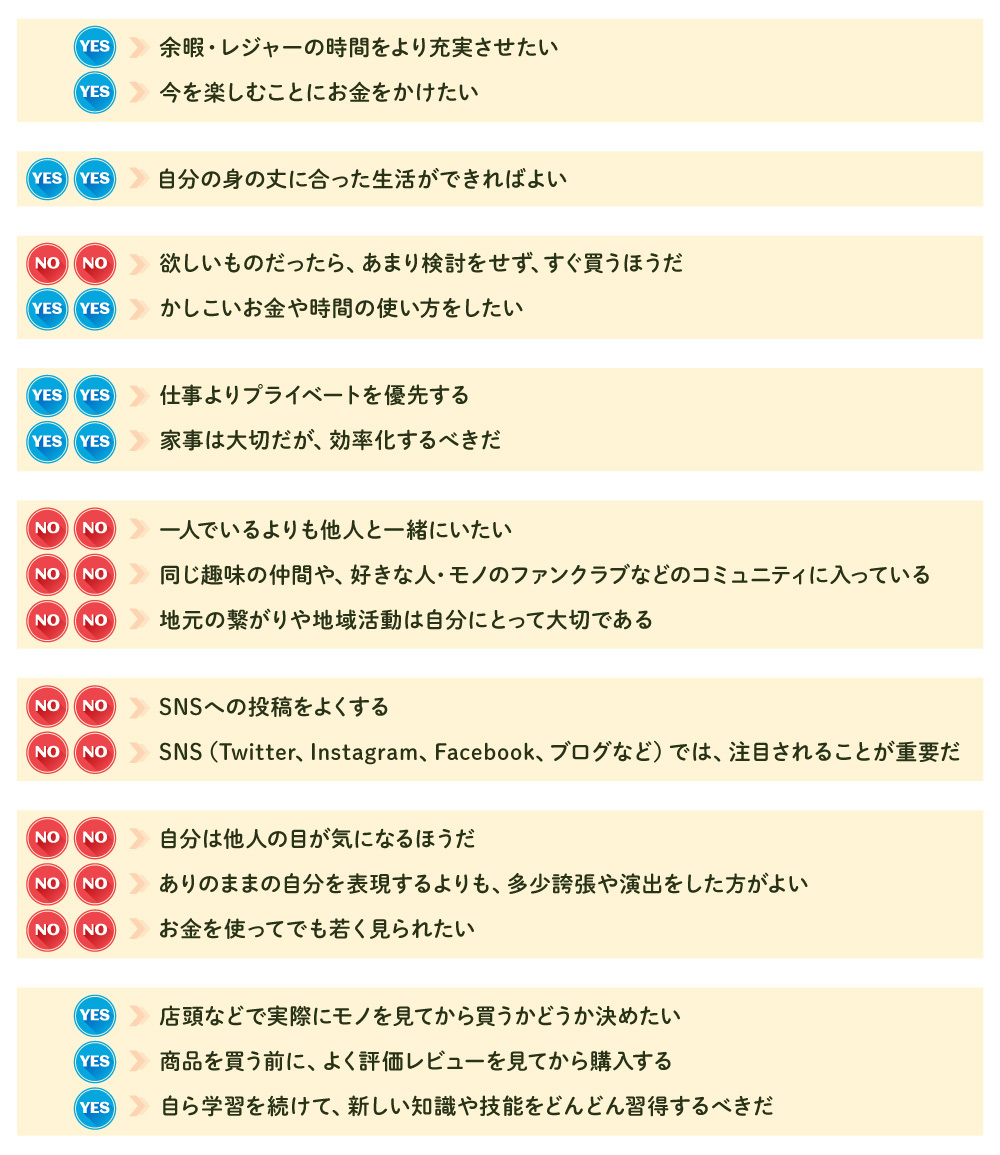
The DDD members conducted a multifaceted evaluation and analysis of the meaning behind these biases. In doing so, they consciously considered several factors significantly influencing contemporary societal values.
The first factor is "the experience of the COVID-19 pandemic." There is no doubt that the global pandemic profoundly impacted people's ways of living, their perspectives, and even their views on life and death. Second, we identified the "prolonged economic downturn." With real wages stagnant, people's lives are far from easy. Issues like widening inequality and growing poverty are already becoming visible. These factors are thought to particularly influence consumption behavior, life planning for the 100-year lifespan era, and expectations for the future.
The third factor is "the infrastructure of social media." It's a society where we're constantly connected to others, albeit in a diluted way. The speed at which we can find answers to our interests or questions with a simple search. Fake news and anonymity. The visibility of both allies and malice. The empowerment of individual voices and the simultaneous risk of backlash. These various phenomena have altered people's lives and psychology.
Keeping these three factors unique to modern society in mind, we evaluated and analyzed the values of the earlier "Freedom & Comfort" group.
The newly revealed "11 Desires" of the modern era are
Based on this evaluation and analysis, the naming for the "new desires" of the Freedom & Comfort group was devised.
【Desire for Effortless Freedom】
No desire to struggle for freedom; simply want carefree liberty.
Freedom gained by not aiming too high carries a sense of security.
Freedom easily attained within one's reach, rather than fought for and won, incurs less maintenance cost and causes less loss when it's gone. In a sense, this justifies self-restraint during the pandemic and serves as a coping strategy to avoid pessimism about financial constraints.
Moreover, choosing not to compete with others acts as a filter against the flood of online information showcasing someone, somewhere's lavishly idealized life, overflowing with "real-life fulfillment." Of course, there are likely many other ways people seek freedom in this era, but what this survey brought to light could be described as a modern desire for a "sense of distance from freedom."
Through repeated evaluation and analysis, DDD identified 11 "new desires" this time. Here is the list.
What do you think? Might some of these desires resonate with you?
What struck me most during this analysis wasn't just the "aha!" moments from the uncovered "new desires," but rather that the discussions during the evaluation process itself were the most fascinating part.
Therefore, we urgently introduced graphic recording into the meeting to extract and visualize the discussion. While the "between-the-lines" (the discussion process) is significantly simplified for readability, you can still enjoy a bit of puzzle-solving fun by inferring what discussions took place when comparing the naming and explanations of the desires.
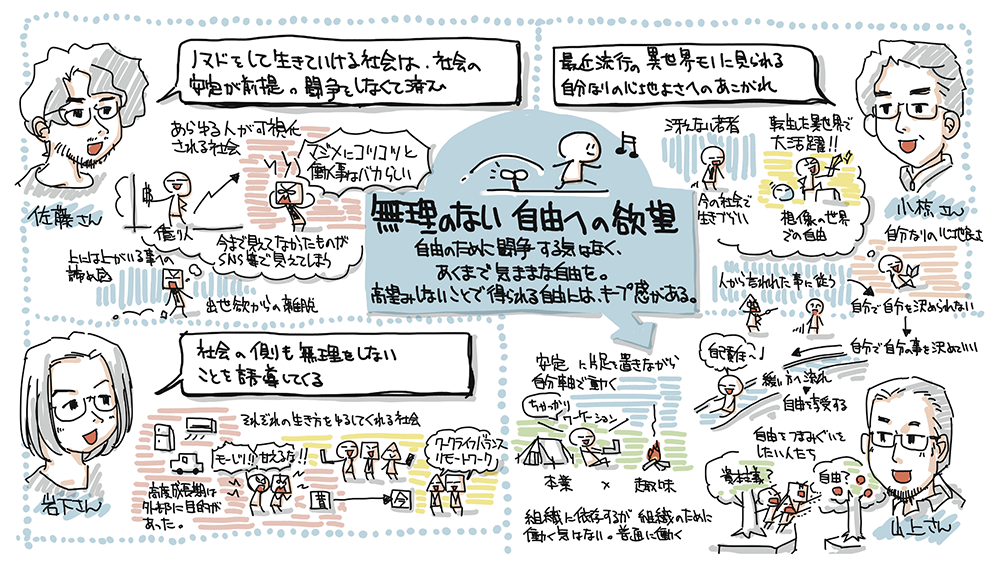
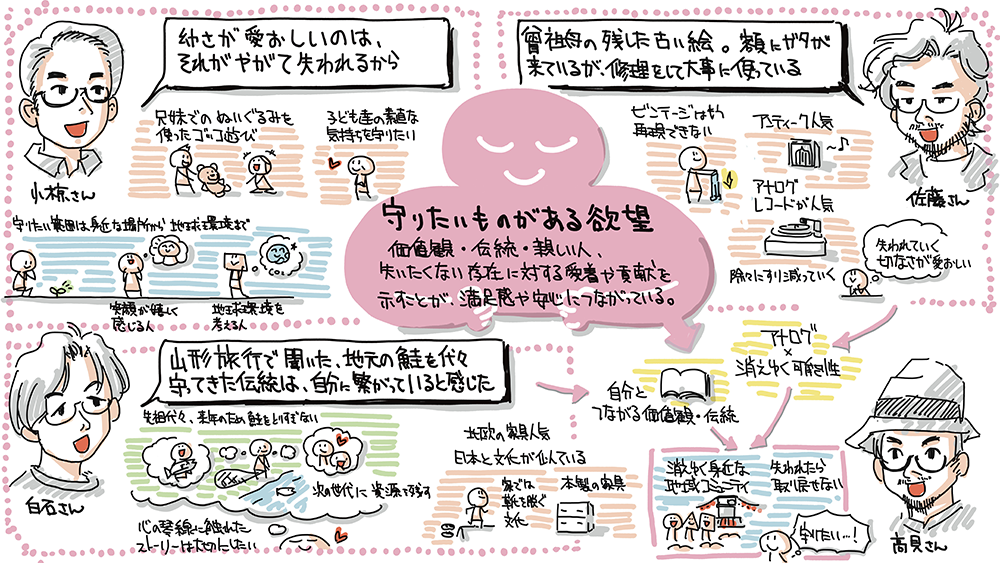
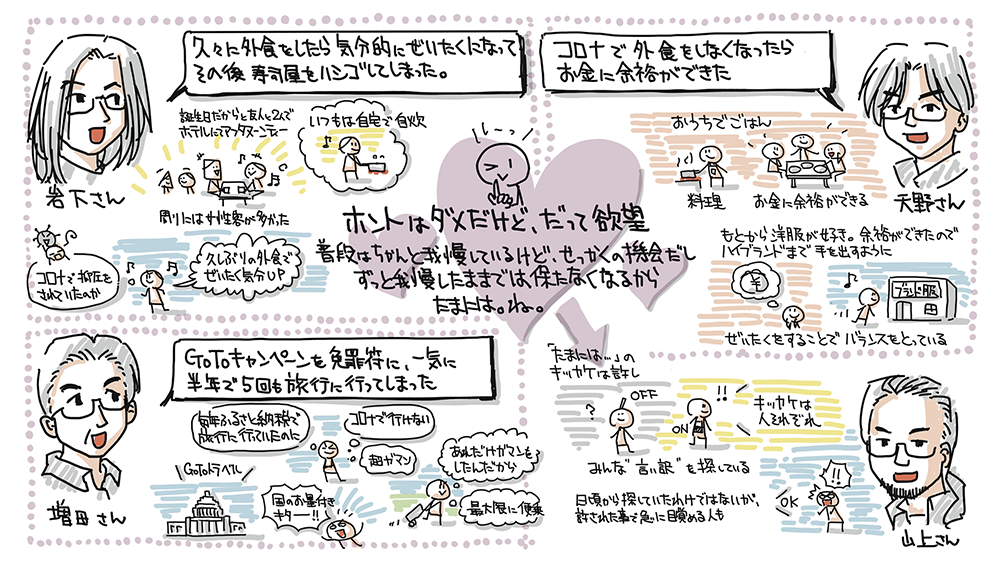
Graphic Recording by: Daisuke Motonari
Now, starting next time, we'll move on to how to use these "new desires." Naturally, a single person possesses multiple desires. Many people likely hold several of these 11 desires. If we can identify such personas among consumers, it should lead to developing "new services and products" perfectly suited for them.
Our journey of examining desires has only just passed the halfway point. It continues onward.





